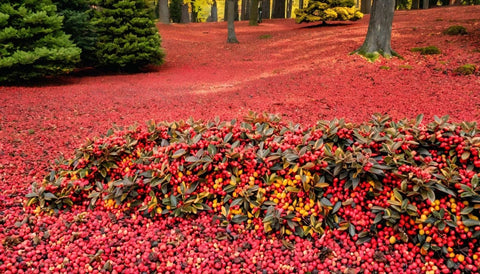Introduction
Cyclamen are charming, fall-blooming plants known for their vibrant colors and heart-shaped leaves. They are perfect for adding life to your fall garden. This guide will walk you through the process of planting and caring for cyclamen, ensuring they thrive in your garden or home.
Section 1: Understanding Cyclamen
1.1 What is Cyclamen?
Cyclamen are a genus of plants that thrive in cooler temperatures. While many varieties bloom in spring, fall-blooming cyclamen varieties, such as Cyclamen hederifolium, are prized for their ability to add late-season color.

1.2 Benefits of Growing Cyclamen
- Aesthetic appeal: Beautiful and colorful blooms that brighten any garden.
- Tolerance to cooler temperatures: Cyclamen flourish in autumn's cooler weather.
- Low maintenance: Once established, they require minimal care and can last for years.
Section 2: Choosing the Right Location
2.1 Light Requirements
Cyclamen thrive in partial shade, making them perfect for shaded garden areas or under trees. Indoors, they do well in bright, indirect light.
2.2 Soil Preferences
Cyclamen prefer well-draining soil rich in organic matter. A slightly acidic to neutral pH (6.0–7.0) works best to encourage healthy growth.

Section 3: Planting Fall-Blooming Cyclamen
3.1 When to Plant
The ideal time to plant fall-blooming cyclamen is late summer to early fall, just before they begin their blooming season.
3.2 Preparing the Soil
Ensure the soil is well-draining. Amend heavy soils with compost or sand to improve drainage and fertility.
3.3 Planting Techniques
Plant cyclamen corms 1–2 inches deep and space them about 6–8 inches apart. Water thoroughly after planting to settle the soil and encourage root development.
Section 4: Caring for Cyclamen
4.1 Watering Needs
Water cyclamen when the soil feels dry to the touch, but avoid overwatering as they are prone to root rot.
4.2 Fertilization
Feed cyclamen with a balanced fertilizer every 4-6 weeks during the growing season. Avoid fertilizing during dormancy.
4.3 Pruning and Deadheading
Remove faded flowers and yellowing leaves to encourage continuous blooming and maintain plant health.
4.4 Pest and Disease Management
Watch for common pests like aphids and slugs. Use organic insecticides or remove pests manually. Ensure good drainage to avoid fungal diseases.
Section 5: Preparing for Dormancy
5.1 Understanding Dormancy
Cyclamen enter dormancy in late spring. Their leaves will turn yellow and die back as a signal that dormancy is beginning.
5.2 Care During Dormancy
Reduce watering during dormancy and avoid fertilizing. Store potted cyclamen in a cool, dark place, or leave outdoor plants in the ground undisturbed.

Section 6: Propagating Cyclamen
6.1 Seed Propagation
Sow cyclamen seeds in late summer in a well-draining potting mix. Keep the soil moist and in a cool location until germination.
6.2 Division of Corms
Divide corms after the dormancy period by carefully separating them and replanting in well-prepared soil.
Conclusion
Fall-blooming cyclamen are a beautiful addition to any autumn garden. With the right care, these hardy plants will provide color and interest year after year. Happy planting!






























Comments (0)
There are no comments for this article. Be the first one to leave a message!